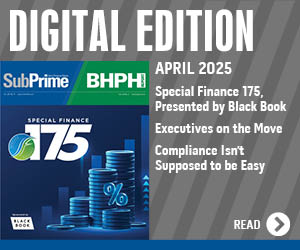Auto defaults finish 2022 with largest sequential rise in more than 5 years
Chart courtesy of S&P Dow Jones Indices and Experian.
Auto defaults closed 2022 with the first double-digit rise in the default rate in more than five years.
On Tuesday, S&P Dow Jones Indices and Experian released data through December for the S&P/Experian Consumer Credit Default Indices. The auto rate came in at 0.87%, representing the first of increase 10 basis points since September 2017. That’s when the sequential rise went from 0.95% to 1.05%, according to the database generated by S&P Dow Jones Indices and Experian.
Meanwhile, analysts also discovered the composite rate — a comprehensive measure of changes in consumer credit defaults — moved 4 basis points higher in December to 0.63%.
In other parts of financial services, S&P Dow Jones Indices and Experian found that the bank card default rate jumped 15 basis points higher to 2.77% while the first mortgage default rate ticked up 1 basis point to 0.43%.
Analysts also determined four of the five major metropolitan areas posted higher default rates in December compared to previous month.
Chicago and Miami generated the largest increases, climbing 8 basis points each to 0.79% and 0.78% respectively.
Dallas and Los Angeles both rose 4 basis points to 0.62% and 0.40% respectively.
New York edged 1 basis point lower to 0.65%.
Jointly developed by S&P Indices and Experian, analysts noted the S&P/Experian Consumer Credit Default Indices are published monthly with the intent to accurately track the default experience of consumer balances in four key loan categories: auto, bankcard, first mortgage lien and second mortgage lien.
The indices are calculated based on data extracted from Experian’s consumer credit database. This database is populated with individual consumer loan and payment data submitted by lenders to Experian every month.
Experian’s base of data contributors includes leading banks and mortgage companies and covers approximately $11 trillion in outstanding loans sourced from 11,500 lenders.


